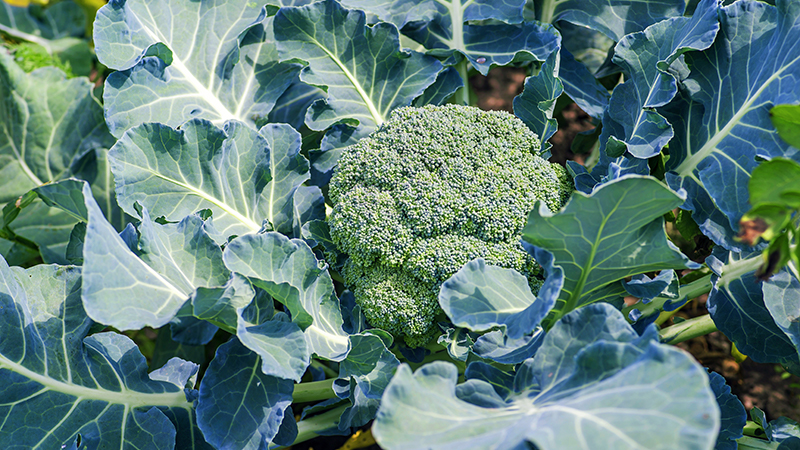Pest Of The Month: Cabbage Looper

Cabbage loopers are easily confused with other loopers, but can be distinguished from most by the presence of small prolegs located on the abdomen.
At pupation, the looper forms a thin white cocoon on the underside of foliage, in plant debris, or among clods of soil. The forewings of the cabbage looper moth are mottled gray-brown in color and the hind wings are light brown at the base, with the distal portions dark brown. The forewing bears silvery white spots centrally. The smaller size and forewing spots distinguish cabbage looper from most other crop-feeding noctuid moths.
Cabbage loopers are leaf feeders, and in the first three instars they confine their feeding to the lower leaf surface. The fourth and fifth instars chew large holes, and usually do not feed at the leaf margin. In the case of cabbage, however, they feed not only on the wrapper leaves, but also may bore into the developing head. Feeding sites are marked by large accumulations of sticky, wet fecal material.
Survival And Spread
Adult females produce 300 to 600 eggs. Development time from egg to adult requires 18 to 25 days, so at least one generation per month could be completed successfully under favorable weather conditions.
Cabbage looper eggs are normally deposited singly on leaves, although clusters of six to seven eggs are not uncommon. The small semi-circular eggs are ridged, yellowish white or greenish in color. Eggs hatch in two to three days in warm weather.
Larvae have three pairs of prolegs, and crawl by arching their back to form a loop and then projecting the front section of the body forward.
Management Methods
The cabbage looper is attacked by numerous natural enemies. Most studies note the effectiveness of wasp and tachinid parasitoids, and a nuclear polyhedrosis virus. Mass release of Trichogramma spp. has been investigated for cabbage looper suppression.
Insecticide resistance has become a problem in cabbage looper control, and susceptibility varies widely among locations. Growers should incorporate a resistance-management strategy into their control program.
Microbial insecticides currently play a role in cabbage looper management. Bacillus thuringiensis has long been used for effective suppression of cabbage looper, and has the advantage of not disrupting populations of beneficial insects. T. ni nuclear polyhedrosis virus (NPV) is an effective control, but has not been commercialized because of the narrow host range.
Row covers, where economically practical, may be effective at preventing cabbage looper moths from depositing eggs on crops.










